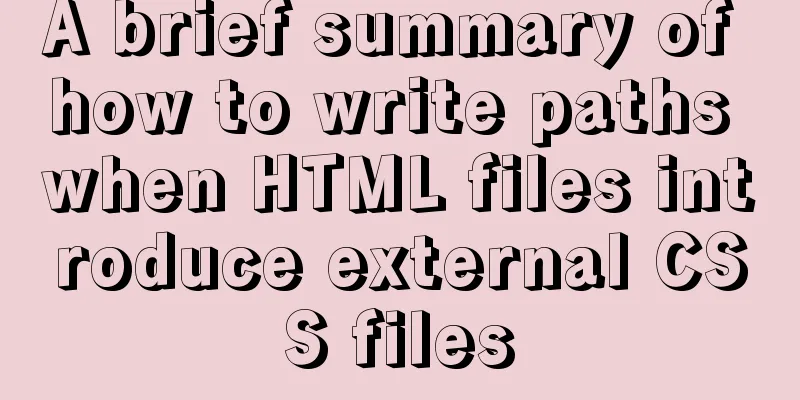What is flex and a detailed tutorial on flex layout syntax

|
Flex Layout Flex is the abbreviation of Flexible Box, which means "flexible layout". It is used to provide maximum flexibility for the box model and freely operate the arrangement of elements (items) in the container. Any container can be specified as a Flex layout.
.box{
display: flex;
}Inline elements can also use Flex layout.
.box{
display: inline-flex;
}Webkit-based browsers must have the -webkit prefix.
.box{
display: -webkit-flex; /* Safari */
display: flex;
}Note that after setting to Flex layout, the float, clear and vertical-align properties of the child elements will become invalid. concept Elements that use Flex layout are called Flex containers, or "containers" for short. All its child elements automatically become container members, called Flex items, or "items" for short.
By default, a container has two axes: the horizontal main axis and the vertical cross axis. The starting position of the main axis (the intersection with the border) is called the main start, and the ending position is called the main end; the starting position of the cross axis is called the cross start, and the ending position is called the cross end. Items are arranged along the main axis by default. The main axis space occupied by a single item is called the main size, and the cross axis space occupied is called the cross size. Container properties 6 properties of containers
1. flex-direction attribute The flex-direction property determines the direction of the main axis (that is, the direction in which the items are arranged).
.box {
flex-direction: row | row-reverse | column | column-reverse;
}
The possible values are 4
2. flex-wrap property By default, items are arranged on a line (also called an "axis"). The flex-wrap property defines how to wrap if one axis cannot fit.
.box{
flex-wrap: nowrap | wrap | wrap-reverse;
}It may take three values. (1) nowrap (default): no line break.
(2) wrap: wrap, with the first line at the top.
(3) wrap-reverse: wrap the line, with the first line at the bottom.
3. flex-flow attribute The flex-flow property is a shorthand form of the flex-direction property and the flex-wrap property, and the default value is row nowrap.
.box {
flex-flow: <flex-direction> || <flex-wrap>;
}4. justify-content attribute The justify-content property defines how items are aligned on the main axis.
.box {
justify-content: flex-start | flex-end | center |
space-between | space-around;
}
It may take 5 values, and the specific alignment depends on the direction of the axis. The following assumes that the main axis is from left to right.
5. align-items attribute The align-items property defines how items are aligned on the cross axis.
.box {
align-items: flex-start | flex-end | center | baseline | stretch;
}
It may take 5 values. The specific alignment method is related to the direction of the cross axis. The following assumes that the cross axis is from top to bottom.
6. align-content attribute The align-content property defines the alignment of multiple axes. If the project has only one grid line, this property has no effect.
.box {
align-content: flex-start | flex-end | center | space-between | space-around | stretch;
}
This attribute may take 6 values.
Reference document: http://www.ruanyifeng.com/blog/2015/07/flex-grammar.html Summarize This concludes the article on what flex is and a detailed tutorial on flex layout syntax. For more information on flex layout syntax, please search previous articles on 123WORDPRESS.COM or continue to browse the related articles below. I hope you will support 123WORDPRESS.COM in the future! |
<<: Detailed process of installing Jenkins-2.249.3-1.1 with Docker
>>: Basic application methods of javascript embedded and external links
Recommend
HTML basic summary recommendation (title)
HTML: Title Heading is defined by tags such as &l...
Summary of Mysql slow query operations
Mysql slow query explanation The MySQL slow query...
MYSQL slow query and log example explanation
1. Introduction By enabling the slow query log, M...
Detailed explanation of the use of Linux seq command
01. Command Overview The seq command is used to g...
React internationalization react-intl usage
How to achieve internationalization in React? The...
How to define input type=file style
Why beautify the file control? Just imagine that a...
7 skills that web designers must have
Web design is both a science and an art. Web desi...
How to use vs2019 for Linux remote development
Usually, there are two options when we develop Li...
Application nesting of HTML ul unordered tables
Application nesting of unordered lists Copy code T...
Native JS to achieve sliding button effect
The specific code of the sliding button made with...
How to enable Swoole Loader extension on Linux system virtual host
Special note: Only the Swoole extension is instal...
Detailed explanation of HTML form elements (Part 1)
HTML forms are used to collect different types of...
Answer the caching principle of keep-alive components from the perspective of source code
Today, let’s get straight to the point and talk a...
Detailed explanation of the difference between a href=# and a href=javascript:void(0)
a href="#"> After clicking the link, ...
Detailed explanation of AWS free server application and network proxy setup tutorial
Table of contents Precautions Necessary condition...


















